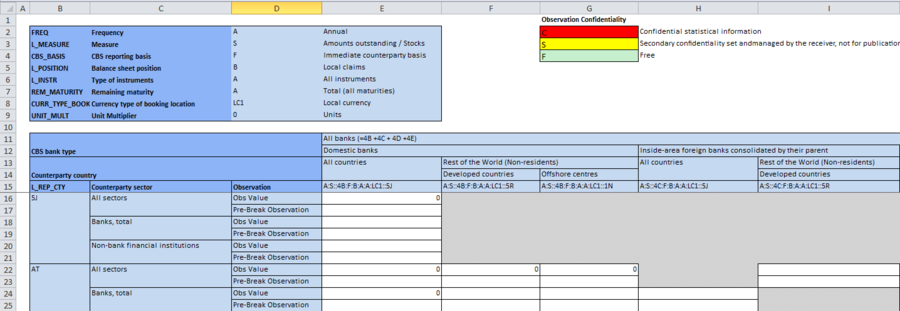Difference between revisions of "Excel Reporting Template Data Format"
(→Formatting Using Query Parameters) |
(→Formatting Using Query Parameters) |
||
| Line 17: | Line 17: | ||
* partial=true | * partial=true | ||
| − | The partial parameter is used to indicate that the output excel file should build the output table based on the data in the response or the [[Data_Reporting_Template#Defining_the_Universe_of_Data|universe of data]] defined by the report template definition. <b>This partial parameter should be set to true for data dissemination</b> as it is not possible to generate a non-partial template without passing extra information about who the Data Provider is. | + | The partial parameter is used to indicate that the output excel file should build the output table based on the data in the response or the [[Data_Reporting_Template#Defining_the_Universe_of_Data|universe of data]] defined by the report template definition. <b>This partial parameter should be set to true for data dissemination</b> as it is not possible to generate a non-partial template without passing extra information about who the Data Provider is. If the partial parameter is false (which is the default if not provided), then the data query must include the Data Provider identifier as part of the path. The report template will then be built in the context of that Data Provider, and will include all the cells that the data provider is expected to report, and of those cells, the ones that have data from the data query will be populated. |
| + | |||
| + | For example: | ||
| + | https://demo.metadatatechnology.com/FusionRegistry/ws/public/sdmxapi/rest/data/WB,GCI,1.0/GHA.GCI../GHA?format=reporttemplate | ||
=Example= | =Example= | ||
Revision as of 12:42, 30 March 2020
Overview
The Reporting Template Data format is not an official SDMX format. It was developed by Metadata Technology initially as a format for data collection, simplifying the data reporting process by building an Excel workbook which prebuilds all the observation cells the Data Provider is expected to report. This design means the data reporter only has to concern themselves with filling in the observation values, and not deciding what classification ids they need to report for each Dimension (like the Fusion-Excel data format).
However, due to the flexability of the format, which allows each Agency to design the layout of each worksheet tailored for each Dataflow, the use cases were extended to support Reporting Templates as a data dissemination format. So from Fusion Registry 10.2.x and higher, it is possible to query for a data in this format.
The Reporting Template Data format differs from all the other CSV and Excel style data formats as there is no set layout. The layout (rows and columns) and inclusion / exclusion of information, such as Attributes, is designed in the Fusion Registry by creating a Reporting Template Definition. The output dataset is built into a table in Excel, with the table populated with the observation values, and optionally observation attributes (if it has been designed to include this information).
For more information on this format, click here.
Formatting Using Query Parameters
The following URL parameters can be used in a RESTful query for to get data in Excel format.
- format=reporttemplate
- partial=true
The partial parameter is used to indicate that the output excel file should build the output table based on the data in the response or the universe of data defined by the report template definition. This partial parameter should be set to true for data dissemination as it is not possible to generate a non-partial template without passing extra information about who the Data Provider is. If the partial parameter is false (which is the default if not provided), then the data query must include the Data Provider identifier as part of the path. The report template will then be built in the context of that Data Provider, and will include all the cells that the data provider is expected to report, and of those cells, the ones that have data from the data query will be populated.
Example
Note: The same formatting can be applied using HTTP Accept Headers as opposed to query parameters.
